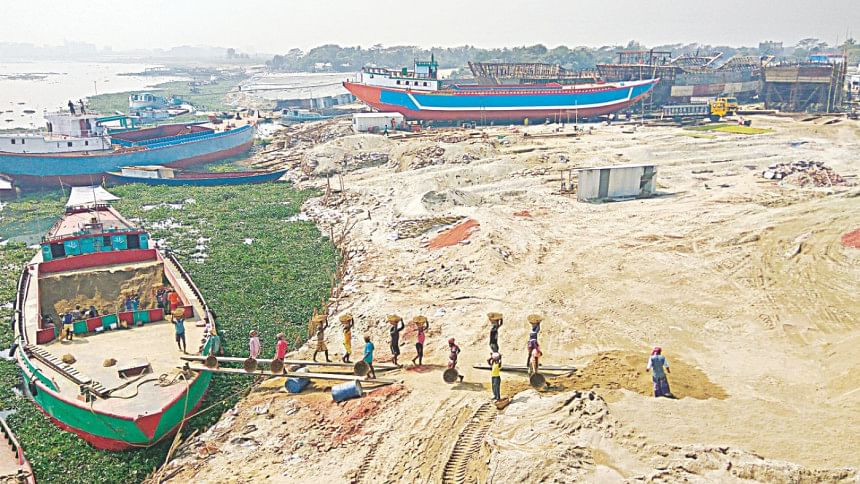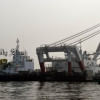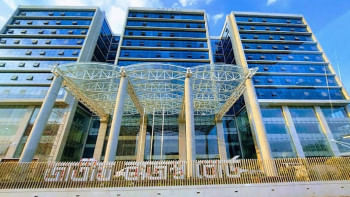Pollution threatens Meghna

Water of the Meghna river may become too polluted to be treated in the next five years if immediate actions are not taken to save it from pollution, says an Asian Development Bank report.
Pollution from industries and other sources, connected to the Meghna through canals, becomes severe in the pre-monsoon season.
Concentration of dissolved oxygen, necessary for the survival of fish, invertebrates, bacteria and underwater plants, has decreased significantly over time at some points of the river, according to the report published on August 20.
“The level of chromium exceeded drinking water standards at a number of locations in the Bishnandi canal, just upstream of a drinking water intake point, and should be treated as a potential risk,” it noted.
Chromium is a heavy metal harmful to human health.
Talking to this newspaper, an official of Dhaka Water Supply and Sewerage Authority (DWASA) said that if pollution in the Meghna is not checked, it may hinder the two projects they have taken to provide over 40 percent of drinking water for the capital’s 20 million residents.
DWASA has been setting up two water treatment plants -- Gandhobpur and Sayedabad phase-III, which will treat water from the Meghna.
The four rivers -- the Balu, Buriganga, Shitalakkhya, and Turag -- surrounding the capital are unsuitable for such a project because of poor and deteriorating water quality, mentioned the official, seeking anonymity.
The proposed intake locations in the Meghna are at Bishnandi in Araihazar Upazila and Haria in Sonargaon Upazila of Narayanganj. Pollution is the main threat to water quality at these two intake points, added the official.
The report said the Bishnandi canal receives discharge from numerous small and medium-sized textile industries, as well as untreated domestic wastewater from nearby residential areas.
It mentioned that the water treatment cost may increase threefold if water quality continues to deteriorate.
The ADB is providing financial support to DWASA for developing the intake point at Bishnandi along with a raw water transmission pipeline and a water treatment plant under Dhaka Environmentally Sustainable Water Supply Project, approved in 2013.
“At present, the quality of Meghna river water is good. To avoid deterioration in water quality and ensure sustainable supply to Dhaka, it is critical to strengthen monitoring and enforcement mechanisms for the river,” the ADB report pointed out.
Currently, DWASA provides 87 percent of drinking water for the city dwellers from groundwater sources, and the rest comes from surface water sources. Groundwater abstraction, however, has reached beyond sustainable yields, it added.
Talking to The Daily Star, DWASA Managing Director Taqsem A Khan said, “We will not let Meghna become [as polluted as] Buriganga and Shitalakkhya.”
He also said the sources of pollution in Meghna will be checked at any cost and a master plan will be taken soon to ensure supply of drinking water for the city dwellers for the next 50 years.

 For all latest news, follow The Daily Star's Google News channel.
For all latest news, follow The Daily Star's Google News channel. 






Comments